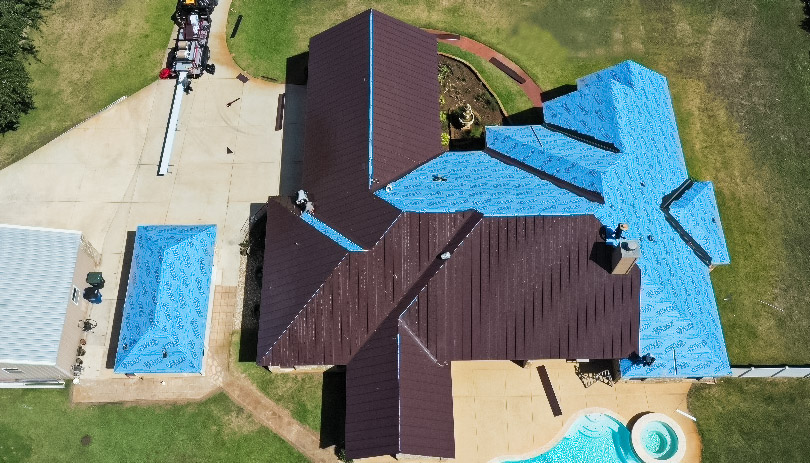Choosing the right color scheme for one’s home exterior is an important decision. After all, this will be the first thing people see when they approach the house and it can set a tone of beauty and elegance or detract from the overall aesthetic appeal. Thus, selecting colors that compliment each other in harmony should be done with careful thought to ensure one’s home looks its best.
This article will provide tips on how to choose a proper color scheme for one’s exterior that not only stands out but also reflects one’s own unique style. From contrast to complimentary hues, there are plenty of options available when deciding what colors work well together.
Identifying Your Style
When selecting the right color scheme for your home’s exterior, it is important to consider your style.
One way of doing this is by mixing textures and focusing accents on certain elements. Utilizing different materials such as brick, stone, wood or metal can help you create a unique look that reflects who you are.
Additionally, contrasting colors in various hues will add depth and texture to your design while allowing you to make a bold statement that stands out from other homes in the neighborhood.
It is also important to remember that the overall feel should be comfortable and inviting so guests feel welcomed when they arrive at your doorstep.
With these tips in mind, choosing an exterior color scheme for your home can become an enjoyable task that brings life into the area through its beauty and vibrancy.
Considering Your Climate
When selecting the right color scheme for your home’s exterior, it is essential to consider your climate. The weather in your area will affect both the longevity of paint and also how well certain colors are received by a passerby.
Furthermore, when looking at potential color schemes, you should make sure that they are suited to the environment you live in. Weather proofing should be an integral part of any decision-making process: choose materials that can withstand rain, hail or extended periods of sun exposure without fading or discoloration.
Another factor to think about when choosing the right color scheme is creating a look that compliments each other while still remaining true to your style preference. Colors may appear different depending on where they’re applied on the house; darker hues tend to recede and lighter ones advance, so take this into consideration before making a final decision.
Complimentary colors used together can give a sense of balance and harmony which can add cohesion and character to your home’s exterior. Ultimately, pick something within your comfort zone but don’t be afraid to experiment with shades that may not have initially been considered – often times these unexpected combinations work out better than expected!
Taking Landscaping Into Account
When selecting a color scheme for the exterior of your home, it is important to take landscaping into account. Incorporating plants and shrubs can help create an aesthetically pleasing environment, in addition to providing shade and privacy. Evaluating the lighting around the house is also essential; shadows cast by trees or structures will affect how a person perceives the color palette during different times of day.
It may be beneficial to consult with a professional landscape designer who has experience designing outdoor spaces that complement building exteriors. This expert can offer advice on which colors are best suited for certain climates, as well as suggest ideas for making your garden look more attractive throughout the year.
Additionally, they can provide insight into what type of plants and flowers work best for each season and explain why certain species thrive in certain environments. In order to get the most out of this consultation, make sure you have photos or sketches ready so that the designer can effectively visualize your plans.
Examining Your Architecture
When planning the color scheme for your home’s exterior, it is important to take into account both the landscaping as well as examine your architecture.
Taking a look at your current landscape can provide an inspiring palette of colors along with matching materials that work together to create cohesion and beauty in any outdoor setting.
In addition to examining the surrounding environment, carefully considering existing architectural features such as window shutters or trim will also help you determine how specific hues may interact with each other and provide additional guidance when selecting a suitable color scheme.
If there are any unique characteristics about your property’s structure, then incorporating these elements into the overall design plan can be essential in creating a balanced visual effect while maintaining harmony with its natural surroundings.
By taking all of these factors into consideration, one can begin to develop an aesthetically pleasing arrangement of colors that will bring out the best qualities of their home’s exterior.
Selecting The Right Hues
When selecting the right color scheme for your home’s exterior, there are many factors to consider.
Harmonizing hues is essential when it comes to creating a cohesive look that will stand out from the rest. It is important to determine what colors work well together and how they interact with each other in various lighting conditions.
Exploring trends can help you decide on a timeless design or one that reflects current trends. In addition to harmonizing hues, an effective color palette should be appropriate for its specific environment.
For example, choosing lighter shades may be more suitable for warmer climates while darker tones provide better protection against harsh elements such as rain and snow. The amount of light your house receives can also influence the selection of colors you choose; bright colors absorb heat whereas cooler tones reflect it away.
Ultimately, carefully considering all these factors will ensure that you make the best choice for both aesthetic appeal and practicality.
Creating Contrast And Balance
Choosing the right hues for your home’s exterior is just one part of creating a beautiful, inviting space.
From incorporating textures to harmonizing tones, there are many ways to create contrast and balance while designing an eye-catching outdoor environment.
Texture can add depth to any color scheme by introducing elements such as wood siding or stone accents. When you combine different materials with carefully chosen colors, it helps create visual interest that will make your home stand out from the rest in the neighborhood.
You should also consider how sunlight reflects off of these surfaces so they don’t wash out or clash when exposed to direct light.
When selecting hues and tones, focus on complimentary shades that will work together as a whole. Applying basic principles of color theory—such as sticking within the same family of colors rather than mixing two distinct palettes —will ensure that everything comes together in harmony without being too busy or overwhelming.
With thoughtful consideration and creative use of texture and color, you can design an exterior for your home that looks cohesive and inviting.
Testing Out The Colors
Before commencing the process of selecting a color scheme for one’s home, it is important to understand that this selection involves more than simply choosing shades from swatches or evaluating catalogs. It also requires an appreciation of how the colors will interact with each other and their surroundings when incorporated into the exterior design.
With this in mind, testing out potential colors by reviewing swatches and evaluating finishes can be useful prior to making a final decision.
To get started, consider taking photographs of your home’s facade from various angles under different lighting conditions. This exercise can help you gain insight into which hues would best complement its overall look and feel as well as provide ideas about possible combinations.
Additionally, applying samples directly onto siding or trim boards provides an excellent visual aid in determining what works well together and whether certain nuances need further refinement. Doing so may ultimately save time and money should any modifications become necessary down the line when painting your house’s exterior.
Conclusion
The selection of a color scheme for the exterior of one’s home is an important decision. It requires consideration of numerous factors such as personal style, climate and architecture.
In addition to selecting hues that work well together, it is important to create contrast and balance for best results.
After making a few selections, testing out the colors will enable one to determine whether they are appropriate choices or not.
When considering all these elements carefully, one can be confident in their choice of an attractive and complementary palette for their home’s exterior.


